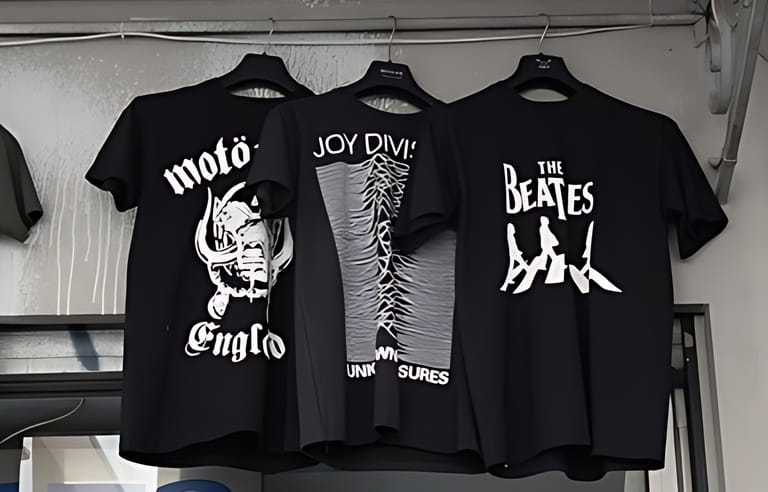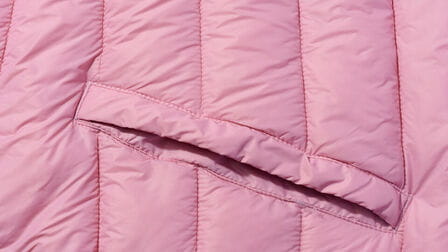Vintage t-shirts have become increasingly popular and valuable over the past few decades, with some rare pieces selling for thousands of dollars. There are several factors that contribute to the high prices of vintage tees:
Limited Supply
Most vintage t-shirts were produced in small quantities decades ago for specific events, brands, bands, etc. Since they weren't mass produced, the remaining supply is very limited, especially for t-shirts from the 1960s-1980s. There are only so many original vintage tees still around, driving up demand.
As the years go by, these vintage tees become rarer and harder to find in good condition. There's a finite supply, and they're not making any more of them! This scarcity drastically increases their value compared to modern reproduction tees.
Design and Graphics
The designs and graphics on vintage tees tend to be more unique and creative than modern graphic tees. They represent iconic moments in history, culture, and fashion.
For example, concert t-shirts from legendary tours or early band merch, like original Rolling Stones or Led Zeppelin tees, are highly coveted. The artwork is often hand drawn or custom created using dye and screen printing methods that are less common today.
This one-of-a-kind appeal and nostalgia factors into their collectibility. Vintage tee graphics are like wearable art.
Celebrity Status and Pop Culture Significance
Vintage t-shirts associated with major cultural events, celebrities, or pop culture history are hugely valuable. Think Woodstock festival tees, or a shirt worn and signed by a celebrity later on.
Owning a piece of music, sport, or history is exciting for collectors. Vintage tees worn by a celebrity become an artifact of sorts. Even standard tour or brand tees gain prestige and value when they represent a major moment in time.
Condition and Authenticity
Since most vintage tees are 20, 30, 40+ years old, finding them in wearable condition is difficult. Holes, stains, and fading lower value. Collectors want excellence.
Authentic, pristine vintage t-shirts in mint condition command astronomical prices. Signs of aging may add character, but serious flaws tank value. Verifying authenticity is also key as fakes abound.
Rarity, graphics, and backstory mean nothing if a vintage tee shows excessive wear. Condition is king for vintage. Near-flawless equals near-priceless.
Vintage Appeal and Nostalgia
Vintage t-shirts have an undeniable cool factor and nostalgic appeal. They represent a simpler time, memorable era, or pioneer designers.
For collectors, vintage tees are often sentimental. They elicit feelings of nostalgia and attachment to the past. Even those without a direct connection enjoy their retro vibe and historical aesthetics.
Owning a piece of the past has inherent value. Vintage tees provide a tangible way to connect with bygone eras and their lasting influences. That timeless magic helps drive the desirability and prices.
Craftsmanship and Quality
Vintage t-shirts were often made to higher standards than fast fashion tees today in terms of materials and construction. many brands used thicker, more durable cotton blends.
Details like stitching and seam reinforcements show attention to quality and craft. This lends vintage tees character and uniqueness missing from mass produced t-shirts.
Better craftsmanship also allows vintage tees to remain intact for decades if cared for. Their long lifespan attests to their initial investments in quality materials and manufacturing.
Vintage Fashion Movement
Vintage and used clothing has come into vogue across high fashion and streetwear. Designers reference archives, reuse fabrics, and remix retro designs.
This rising appreciation for vintage fashion as its own aesthetic and ethos has boosted desirability and prices across vintage garments, especially t-shirts.
The vintage tee market has exploded with increased mainstream interest in vintage as a representation of authenticity and individuality. As major brands jump on the vintage bandwagon, prices climb higher.
Investment Potential
With iconic vintage t-shirts selling for staggering sums at auction, many view rare tees as an alternative investment akin to art, antiques, or collectible cards.
If properly cared for, scarce vintage tees with cultural significance tend to appreciate over time rather than depreciate like most clothing. This makes them attractive financial investments as well as wearable nostalgia.
More investors and collectors enter the market as high profile sales make headlines, driving up bidding and valuations. Vintage tees have serious investment funds potential.
Conclusion
Vintage t-shirts command astronomical prices compared to new t-shirts because of their limited supply, iconic and nostalgic graphics, condition rarity, quality construction, celebrity connections, and collector/investor appeal. Cultural significance and fashion demand turn these wearable artifacts into highly coveted assets. But beware of fakes! Authenticity and proof of era are required to justify the steep costs.












